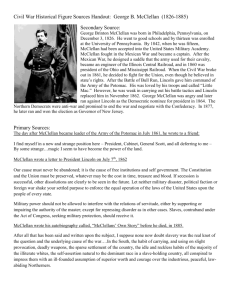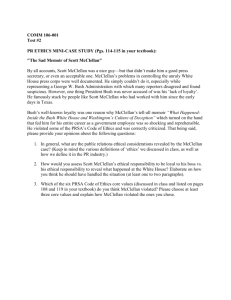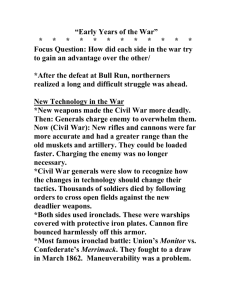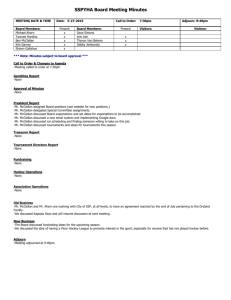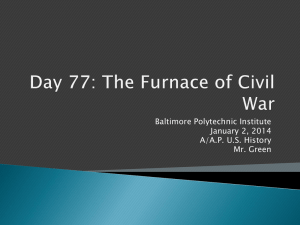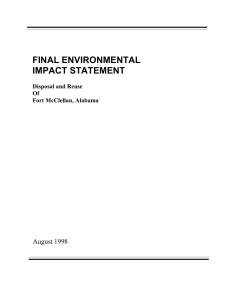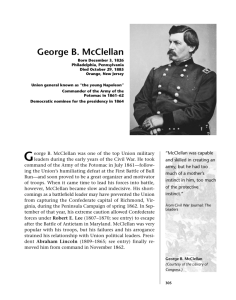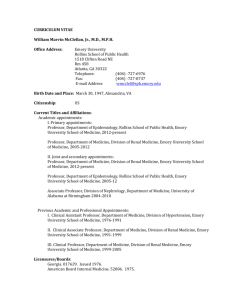Fort McClellan Registry Act
advertisement
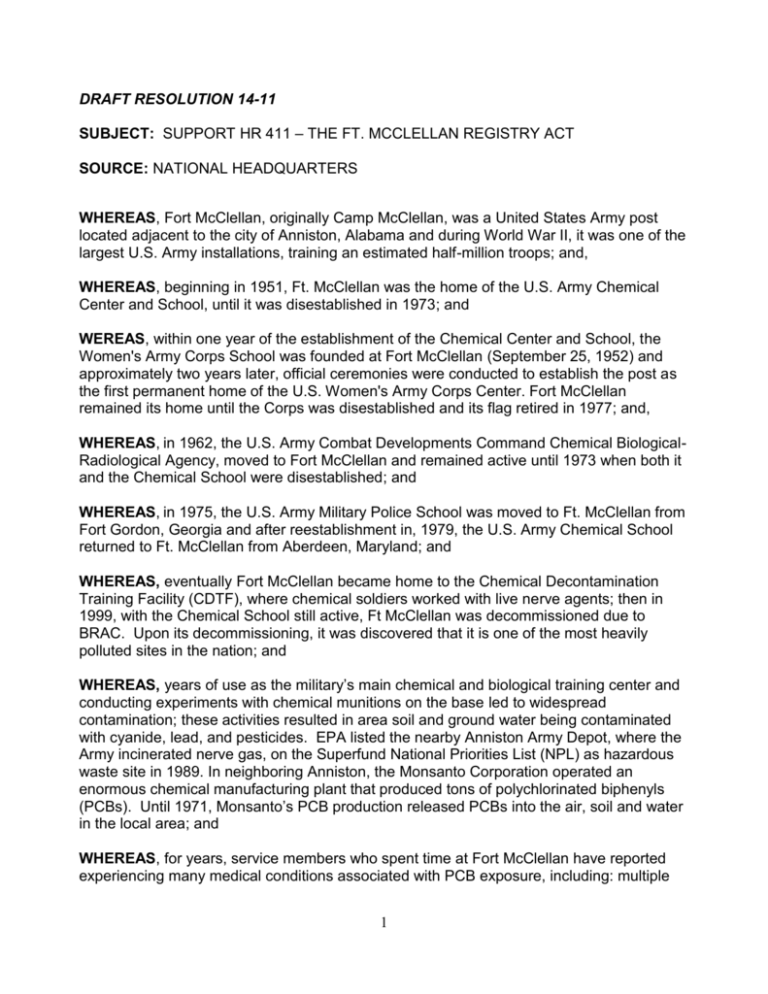
DRAFT RESOLUTION 14-11 SUBJECT: SUPPORT HR 411 – THE FT. MCCLELLAN REGISTRY ACT SOURCE: NATIONAL HEADQUARTERS WHEREAS, Fort McClellan, originally Camp McClellan, was a United States Army post located adjacent to the city of Anniston, Alabama and during World War II, it was one of the largest U.S. Army installations, training an estimated half-million troops; and, WHEREAS, beginning in 1951, Ft. McClellan was the home of the U.S. Army Chemical Center and School, until it was disestablished in 1973; and WEREAS, within one year of the establishment of the Chemical Center and School, the Women's Army Corps School was founded at Fort McClellan (September 25, 1952) and approximately two years later, official ceremonies were conducted to establish the post as the first permanent home of the U.S. Women's Army Corps Center. Fort McClellan remained its home until the Corps was disestablished and its flag retired in 1977; and, WHEREAS, in 1962, the U.S. Army Combat Developments Command Chemical BiologicalRadiological Agency, moved to Fort McClellan and remained active until 1973 when both it and the Chemical School were disestablished; and WHEREAS, in 1975, the U.S. Army Military Police School was moved to Ft. McClellan from Fort Gordon, Georgia and after reestablishment in, 1979, the U.S. Army Chemical School returned to Ft. McClellan from Aberdeen, Maryland; and WHEREAS, eventually Fort McClellan became home to the Chemical Decontamination Training Facility (CDTF), where chemical soldiers worked with live nerve agents; then in 1999, with the Chemical School still active, Ft McClellan was decommissioned due to BRAC. Upon its decommissioning, it was discovered that it is one of the most heavily polluted sites in the nation; and WHEREAS, years of use as the military’s main chemical and biological training center and conducting experiments with chemical munitions on the base led to widespread contamination; these activities resulted in area soil and ground water being contaminated with cyanide, lead, and pesticides. EPA listed the nearby Anniston Army Depot, where the Army incinerated nerve gas, on the Superfund National Priorities List (NPL) as hazardous waste site in 1989. In neighboring Anniston, the Monsanto Corporation operated an enormous chemical manufacturing plant that produced tons of polychlorinated biphenyls (PCBs). Until 1971, Monsanto’s PCB production released PCBs into the air, soil and water in the local area; and WHEREAS, for years, service members who spent time at Fort McClellan have reported experiencing many medical conditions associated with PCB exposure, including: multiple 1 sclerosis, fibromyalgia, diabetes, heart disease, and other reproductive, autoimmune, and neurological system disorders; and WHEREAS, there has been no comprehensive study done on the health of veterans that have served at Fort McClellan to determine whether there is a connection between service at Fort McClellan and the various toxic exposure-related medical conditions reported by these veterans; now therefore Be it resolved: That AMVETS do everything in its power to support the passage of HR 411, the Ft. McClellan Registry Act. 2
